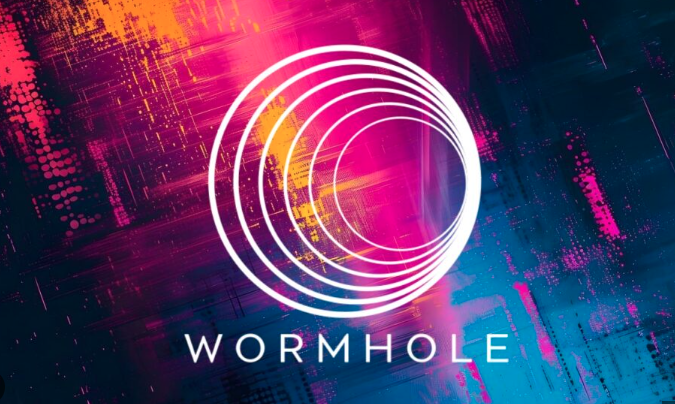Introduction
The blockchain ecosystem is rapidly expanding, with numerous networks offering unique features and capabilities. However, the lack of interoperability between these networks has been a significant barrier to widespread adoption. Wormhole, a cross-chain communication protocol, aims to bridge this gap, enabling seamless interaction between multiple blockchain networks. This article provides a comprehensive overview of Wormhole, its functionality, and its impact on the blockchain industry.
What is Wormhole?
Understanding Cross-Chain Interoperability
Cross-chain interoperability refers to the ability of different blockchain networks to communicate and interact with each other. This interoperability is crucial for creating a connected and efficient blockchain ecosystem, where assets and data can move freely between networks.
Introduction to Wormhole
Wormhole is a decentralized cross-chain communication protocol designed to facilitate the transfer of assets and information between multiple blockchain networks. Developed to enhance interoperability, Wormhole allows users to move their assets across different blockchains seamlessly, enabling a more cohesive and integrated blockchain environment.
How Wormhole Works
The Basics of Cross-Chain Bridges
Cross-chain bridges are protocols that enable the transfer of assets and data between different blockchain networks. These bridges typically lock assets on the source chain and mint equivalent assets on the destination chain, ensuring that the total supply remains constant.
Wormhole’s Architecture
Wormhole operates through a network of guardians, which are nodes responsible for observing and verifying transactions across connected blockchains. When a user initiates a transfer, the guardians validate the transaction and lock the assets on the source chain. Simultaneously, equivalent tokens are minted on the destination chain, allowing the assets to move seamlessly between networks.
Supported Blockchains
Wormhole supports a wide range of blockchain networks, including Ethereum, Binance Smart Chain, Solana, Terra, and more. This broad support enables users to move assets across some of the most popular blockchain ecosystems with ease.
Benefits of Wormhole
Enhanced Interoperability
Wormhole significantly enhances interoperability between blockchain networks, allowing assets and data to flow freely. This increased connectivity fosters innovation and collaboration across different blockchain communities.
Cost Efficiency
By enabling cross-chain transactions, Wormhole reduces the need for multiple intermediary steps, thereby lowering transaction costs. Users can transfer assets directly between networks without incurring high fees associated with traditional methods.
Security
Wormhole employs a robust security framework, leveraging the collective power of its guardian network to validate transactions. This decentralized validation process ensures the integrity and security of cross-chain transfers.
Speed
Wormhole’s architecture is designed for fast and efficient cross-chain transfers. By leveraging a decentralized network of guardians, Wormhole can quickly validate and process transactions, minimizing delays and enhancing user experience.
Wormhole vs. Other Interoperability Solutions
Wormhole vs. Optimism and Arbitrum
While Optimism and Arbitrum focus on scaling Ethereum through layer-2 solutions, Wormhole addresses the broader challenge of cross-chain interoperability. Optimism and Arbitrum enhance transaction throughput and reduce costs within the Ethereum network, whereas Wormhole facilitates asset and data transfers across multiple blockchain networks. Each solution addresses different aspects of blockchain scalability and connectivity, contributing to a more efficient and integrated ecosystem.
Wormhole vs. Other Cross-Chain Bridges
Compared to other cross-chain bridges, Wormhole offers a more decentralized and secure approach. Its guardian network ensures a robust validation process, reducing the risk of fraud and enhancing the reliability of cross-chain transfers. Additionally, Wormhole’s broad support for various blockchain networks sets it apart from other interoperability solutions.
Use Cases of Wormhole
Decentralized Finance (DeFi)
Wormhole’s ability to transfer assets across different blockchain networks makes it a valuable tool for DeFi applications. Users can leverage assets from multiple blockchains to access a wider range of financial services, enhancing liquidity and investment opportunities.
Non-Fungible Tokens (NFTs)
The NFT market can benefit significantly from Wormhole’s cross-chain capabilities. Artists and collectors can mint, transfer, and trade NFTs across various blockchain networks, expanding their reach and potential market.
Cross-Chain DApps
Developers can build decentralized applications (dApps) that leverage Wormhole’s interoperability to interact with multiple blockchains. This enables more complex and versatile dApps, enhancing their functionality and user base.
Gaming
Blockchain gaming can leverage Wormhole to enable in-game assets and currencies to move across different blockchain networks. This interoperability enhances the gaming experience and allows for more integrated and expansive game worlds.
How to Integrate Wormhole
Developing with Wormhole
Developers can integrate Wormhole into their projects using the Wormhole SDK, which provides a comprehensive set of tools and APIs. This SDK facilitates the creation of cross-chain applications, enabling developers to leverage Wormhole’s interoperability features effectively.
Migration from Single-Chain to Cross-Chain
Existing blockchain projects can migrate to a cross-chain environment using Wormhole. By integrating Wormhole’s protocols, developers can enable their applications to interact with multiple blockchains, expanding their functionality and user base.
The Future of Wormhole
Roadmap and Updates
The Wormhole team has laid out an ambitious roadmap, focusing on continuous improvements and new features. Upcoming updates aim to enhance performance, security, and user experience, solidifying Wormhole’s position as a leading cross-chain communication protocol.
Community and Ecosystem Growth
The Wormhole community is growing rapidly, with numerous projects and developers joining the ecosystem. This growth fosters innovation and accelerates the adoption of Wormhole, creating a robust and vibrant ecosystem.
Interoperability with Emerging Blockchains
As new blockchain networks emerge, Wormhole aims to expand its support to include these networks. By continuously adding new blockchains, Wormhole ensures that it remains at the forefront of cross-chain interoperability, catering to a diverse and evolving blockchain landscape.
Challenges and Considerations
User Experience
While Wormhole offers significant benefits, improving user experience remains a priority. Simplifying the onboarding process and ensuring smooth interactions are crucial for mass adoption.
Security Concerns
Despite its robust security framework, Wormhole must continuously monitor and address potential vulnerabilities. Regular audits and updates are essential to maintain the system’s integrity and trustworthiness.
Regulatory Landscape
The evolving regulatory landscape for blockchain technology poses challenges for Wormhole. Ensuring compliance with global regulations while maintaining decentralization and security is a delicate balance that must be achieved.
Conclusion
Wormhole represents a significant advancement in cross-chain interoperability, providing a highly efficient, secure, and cost-effective solution for bridging multiple blockchain networks. Its ability to enhance connectivity, reduce costs, and maintain security makes it a promising technology for the future of blockchain. As the ecosystem continues to grow and evolve, Wormhole is poised to play a pivotal role in the broader blockchain landscape.
Frequently Asked Questions (FAQ)
What is Wormhole?
Wormhole is a decentralized cross-chain communication protocol designed to facilitate the transfer of assets and information between multiple blockchain networks, enhancing interoperability.
How does Wormhole work?
Wormhole operates through a network of guardians that validate and process cross-chain transactions. Assets are locked on the source chain, and equivalent tokens are minted on the destination chain, enabling seamless transfers.
What are the benefits of Wormhole?
Wormhole offers enhanced interoperability, cost efficiency, security, and speed. It allows assets and data to move freely between blockchain networks, reducing transaction costs and improving user experience.
How does Wormhole compare to other interoperability solutions?
Wormhole provides a more decentralized and secure approach compared to other cross-chain bridges. While Optimism and Arbitrum focus on scaling Ethereum, Wormhole addresses cross-chain interoperability, facilitating transfers across multiple blockchains.
What are the use cases of Wormhole?
Wormhole is ideal for decentralized finance (DeFi), non-fungible tokens (NFTs), cross-chain dApps, and blockchain gaming. It enables seamless asset and data transfers across different networks, enhancing functionality and user experience.
How can developers integrate Wormhole?
Developers can use the Wormhole SDK to integrate cross-chain capabilities into their projects. The SDK provides tools and APIs for creating cross-chain applications and enabling seamless interaction with multiple blockchains.
What challenges does Wormhole face?
Wormhole needs to improve user experience, ensure continuous security enhancements, and navigate the evolving regulatory landscape to achieve mass adoption and maintain integrity.
Wormhole is set to revolutionize cross-chain interoperability, offering a robust and efficient solution for various applications. As the blockchain ecosystem evolves, Wormhole will play a crucial role in driving innovation and adoption across different industries.


